Fantastic bushwalks in NSW
Blue Mountains National Park
Many of the best bushwalks in New South Wales are found in the spectacular Blue Mountains. This vast and rugged region is home to one of Australia’s most iconic national parks. It is as well listed as a UNESCO World Heritage site. On our bushwalks, we hiked sandstone cliffs, deep valleys, lush forests, and waterfalls. The Blue Mountains are a paradise for nature lovers, keen photo snapper and hikers of all levels.

The Blue Mountains National Park welcomed us to Australia with open arms, and we immediately fell in love. We explored its many trails, the Grand Canyon track holding a particular allure. While our hiking boots may have seen their best days, the beauty of the Blue Mountains continues to draw us back. These days, we enjoy the scenery at a more relaxed pace, with frequent visits to the Blackheath golf course.
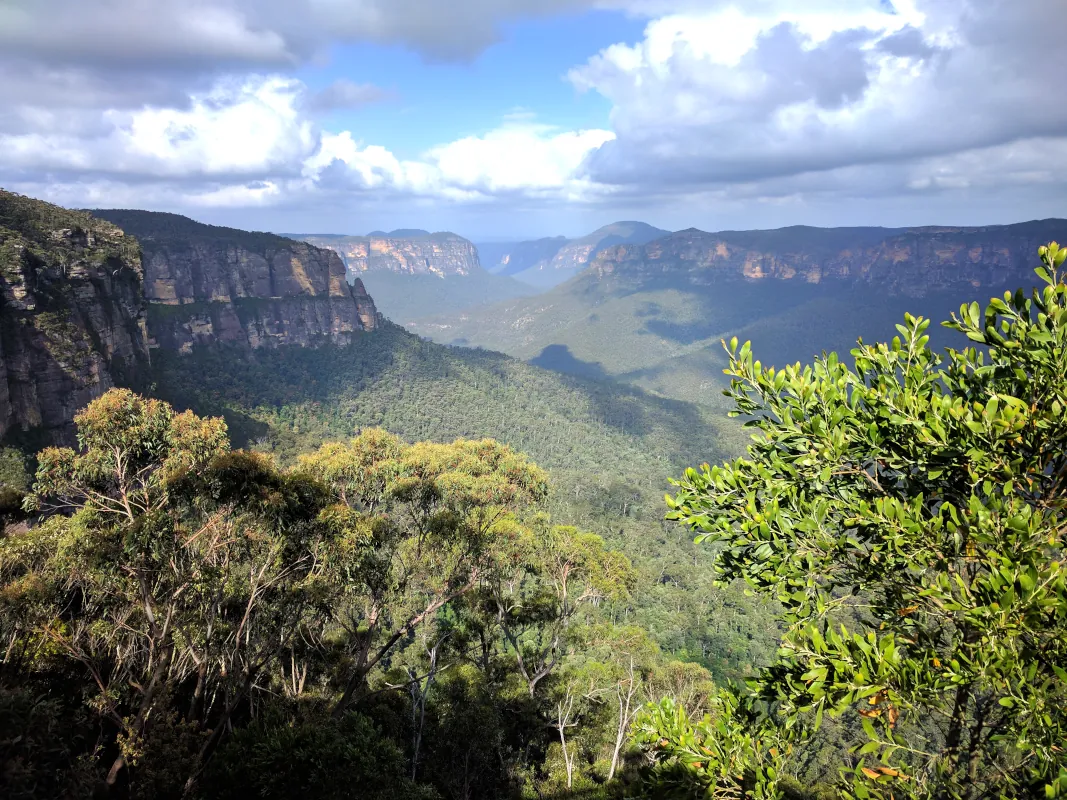
We fell in love with the charming town of Blackheath, our home for much of our time in the Blue Mountains. One of our favourite spots is the Govetts Leap lookout from where you have a panorama of the Grose Valley. We reached the lookout in various ways. Sometimes a quick drive, other times we did bushwalks to get there. The easy Fairfax Heritage walking track which runs from the Blue Mountains Heritage Centre to the lookout or the challenging Popes Glen trail. Back the same way or the hard but very rewarding cliff top track and long Braeside trail.
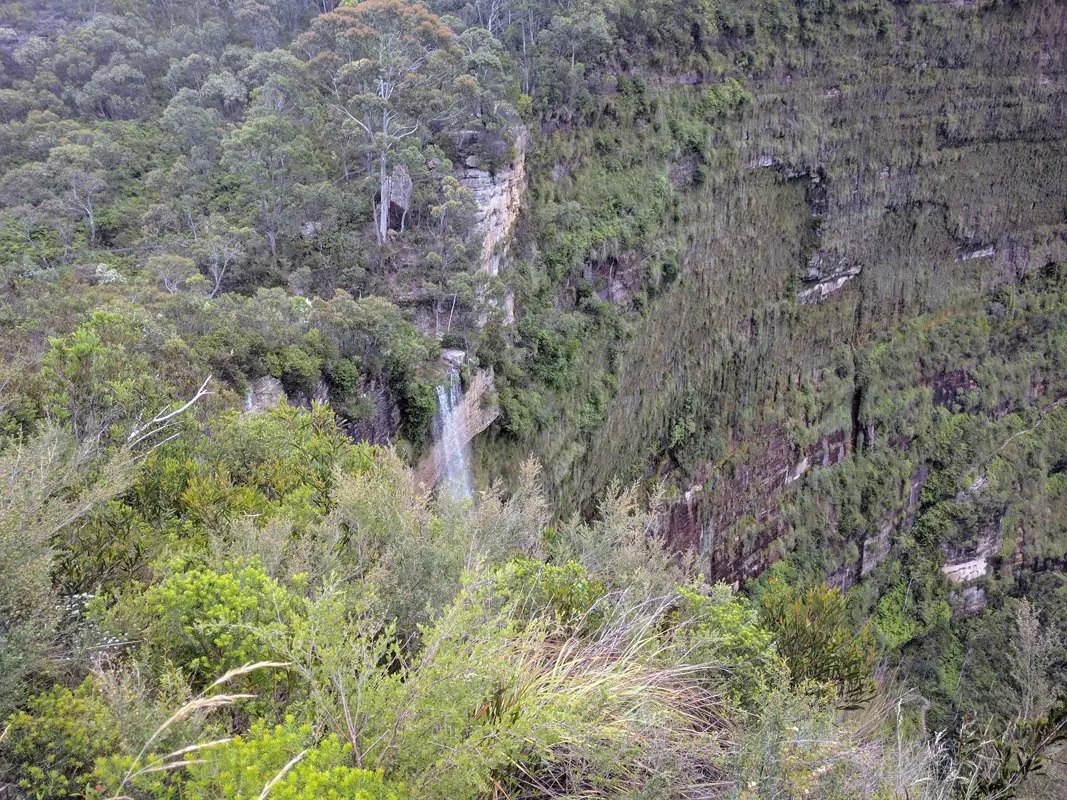
Over the years we did many bushwalks in the Blue Mountains, the Govetts Leap to Pierces Pass was the most challenging. It is a tough 7-8 hour trek through remote wilderness, graded 4 for its steep climbs and rough terrain.The first hurdle is a steep descent from the sheer cliffs from Govetts Leap into the Grose valley. We looked down, and thought it was impossible but once we took the first step, it turned out to be perfectly manageable.
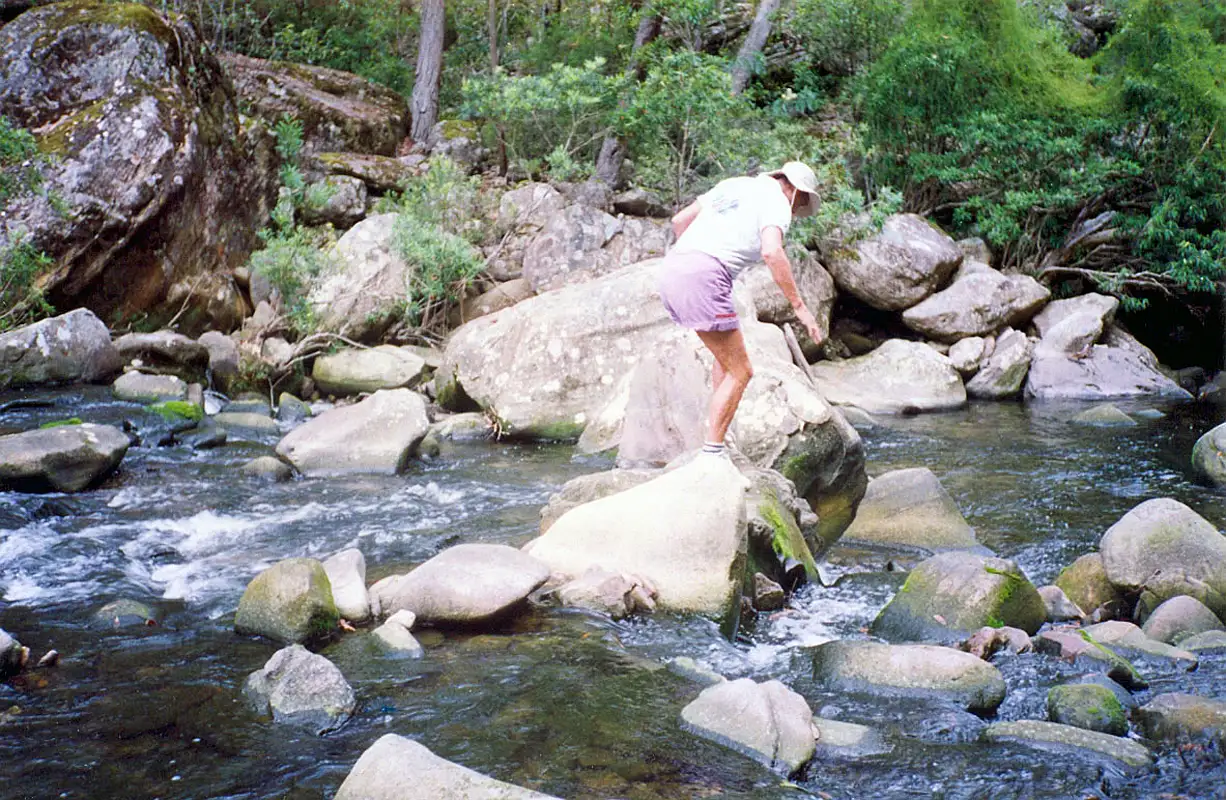
The descent down the 600-metre cliff was not demanding on the body. But we had to walk very carefully, as the trail included steep sections with stairs and narrow ledges. We paused many times to take photos of the spectacular hanging swamps at the cliff site. The real challenge began in the Grose Valley, where we had to cross the river multiple times.
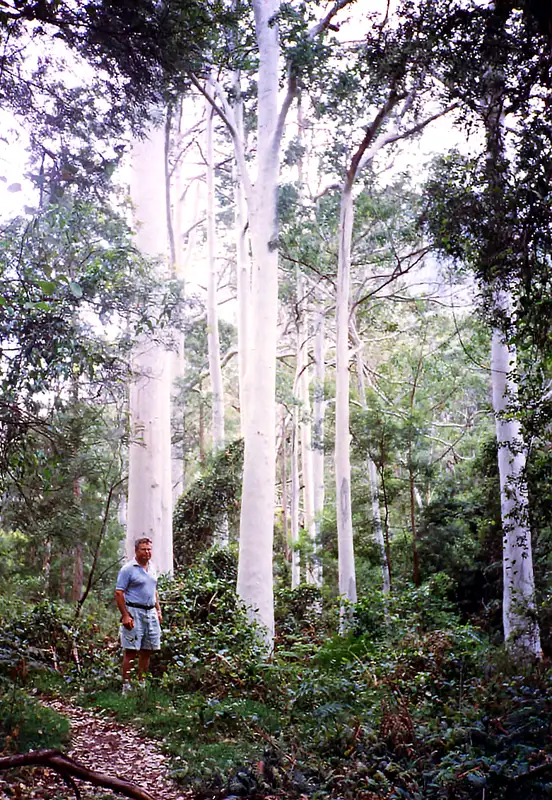
The majestic Blue Gum Forest is the halfway point. Many hikers take a tent with them and stay there for a night before continuing with their bushwalks. We just brought food and water and enjoyed a lovely lunch under the trees while listening to the fantastic sound of the cicadas. We then walked for another 4 hours, with the final stretch uphill. By the end, we were extremely thirsty, having run out of water.
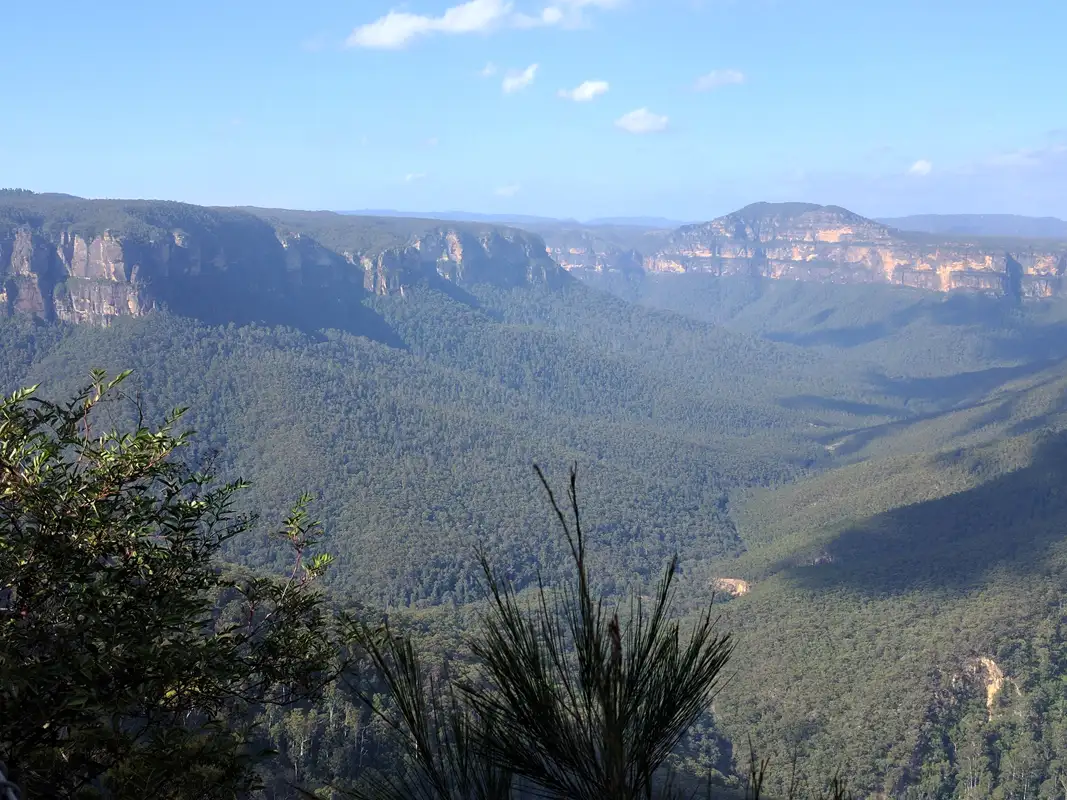
Just 6 km from Blackheath, Evans Lookout is a must-see in Blue Mountains National Park. From its clifftop vantage point, you’ll enjoy sweeping views of the Grose Valley and access to a variety of scenic hiking trails for all levels.
Grand Canyon
The Grand Canyon track is one of the most popular bushwalks in the Blue Mountains NP. A fantastic challenging hike down the sandstone walls that have been carved over millions of years. The grade 3 hike takes about 3 -4 hours to finish. However, when taking photos of the stunning waterfalls, ferns and sweeping views it will take longer.
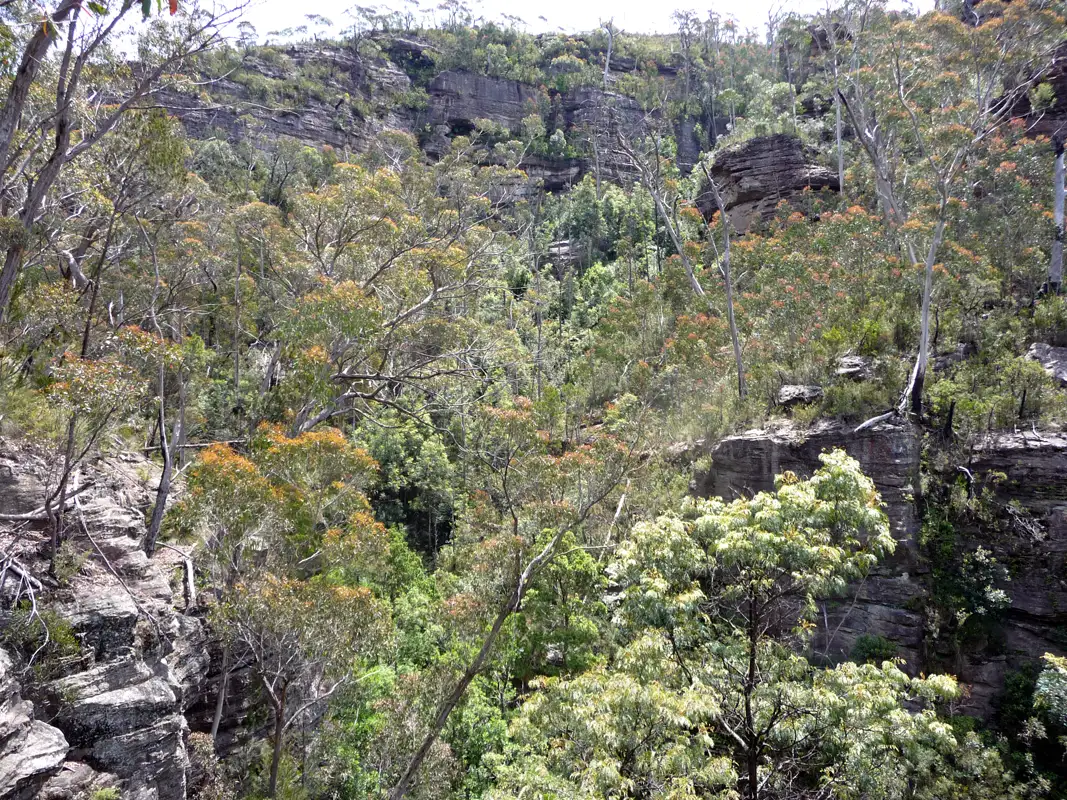
We began our hike into the Grand Canyon from Neates Glen car park and finished at Evans Lookout. We’ve done this walk in the opposite direction before, but we prefer starting from Neates Glen.
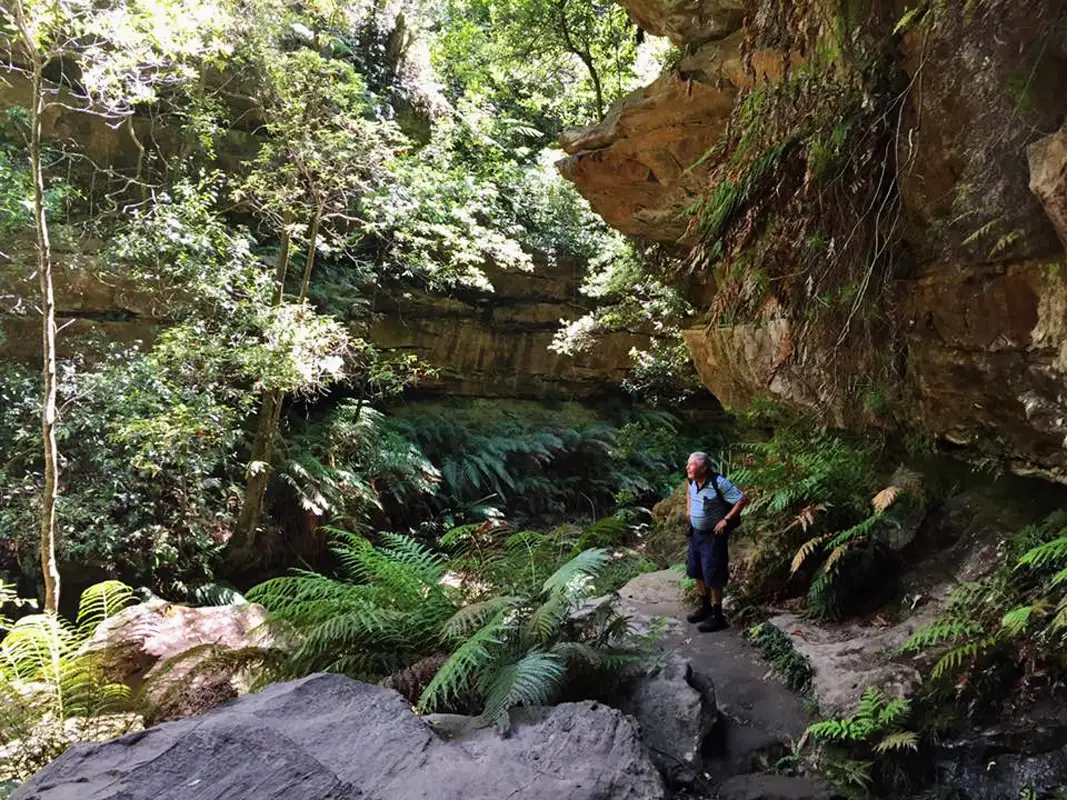
Along the Grand Canyon hike, you’ll find cascading waterfalls, lush fern-filled gullies, sandstone walls, and cool, shaded spots that are perfect for a rest or picnic. On the way down to the bottom of the canyon, we stopped many times to enjoy the magical atmosphere and shooting photos.
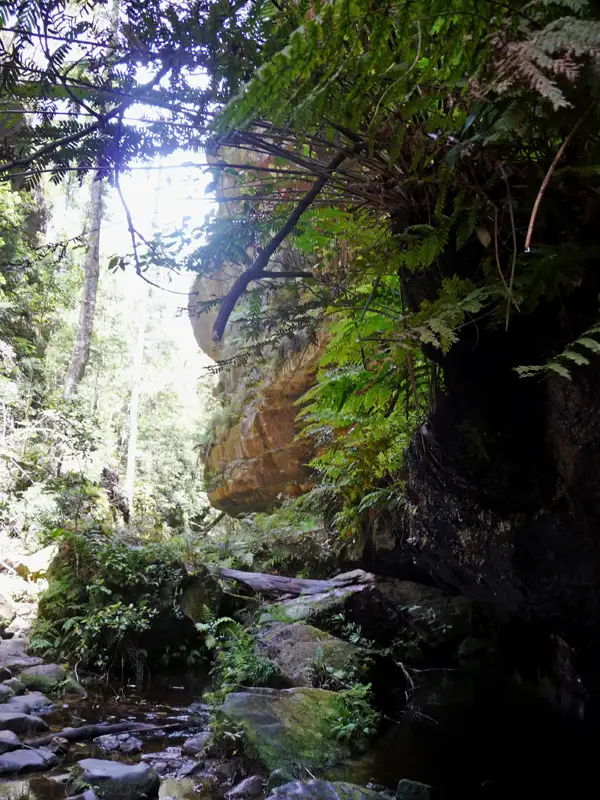
In the canyon it is wet, even in summer time. WE watch carefully our next steps , not to lose our footings. There are some water crossings and parts of the trail are very slippery.
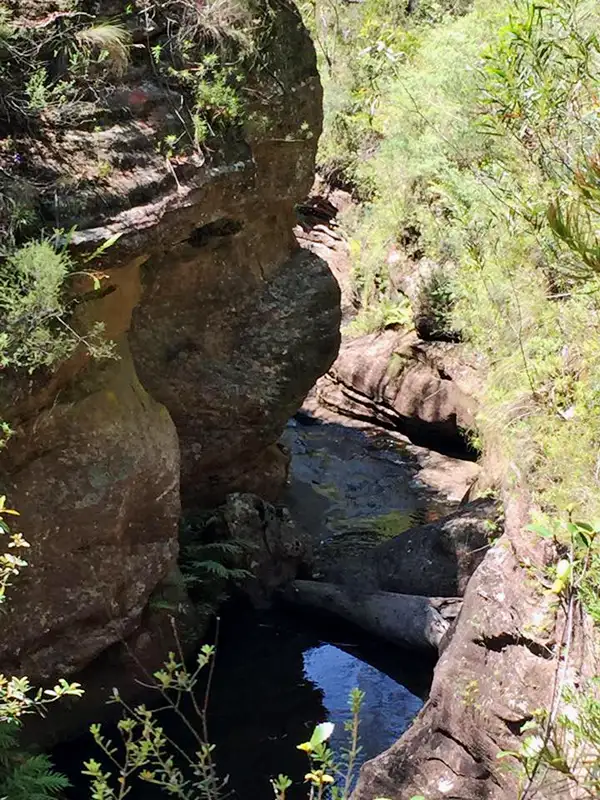
At the bottom of the Grand Canyon, you’ll need to cross Greaves Creek and if you’re really lucky, you might spot one of the huge, brightly coloured crayfish that live there. From there, we walked step uphill to Evans Lookout. There is as well a junction from were you can join bushwalks into the Grose valley.
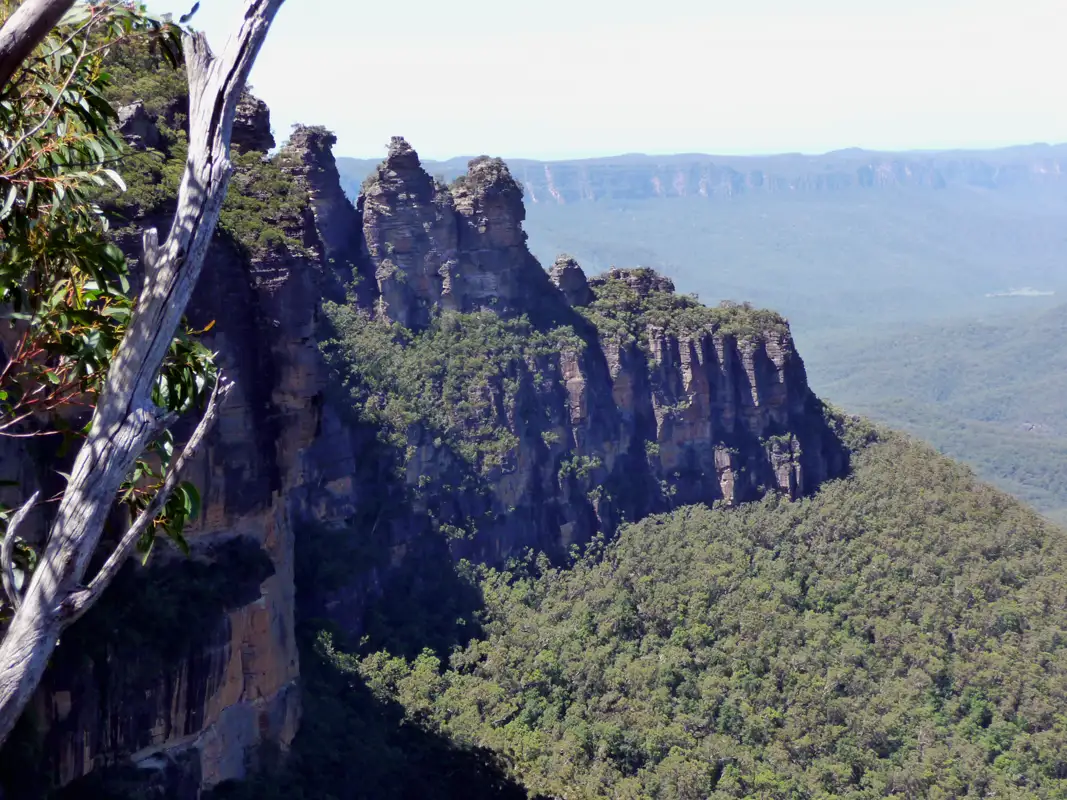
Historic Federal Pass
Among our favourite hikes in the Blue Mountains is the Federal Pass trek. From Katoomba there our two bushwalks options.
Option 1: This hike begins at Scenic World. From there follow the Prince Henry Cliff walk to Echo Point and then down the Giant Stairway (998 steps!). Before you go down, make sure your knees are in perfect order, it is a knee-challenging descent! At the bottom follow the Federation Pass to the Cable Car station.
Option 2: We love this and highly recommend this route. To Echo Point, same way as option 1. Stay on the Prince Henry Cliff walk until the intersection to Leura Forest. From there descent along Linda Creek to the Leura Forest. From the Prince Henry Cliff walk you have a stunning view, but the part is different, is is lush, quiet gives you a mystical feeling.
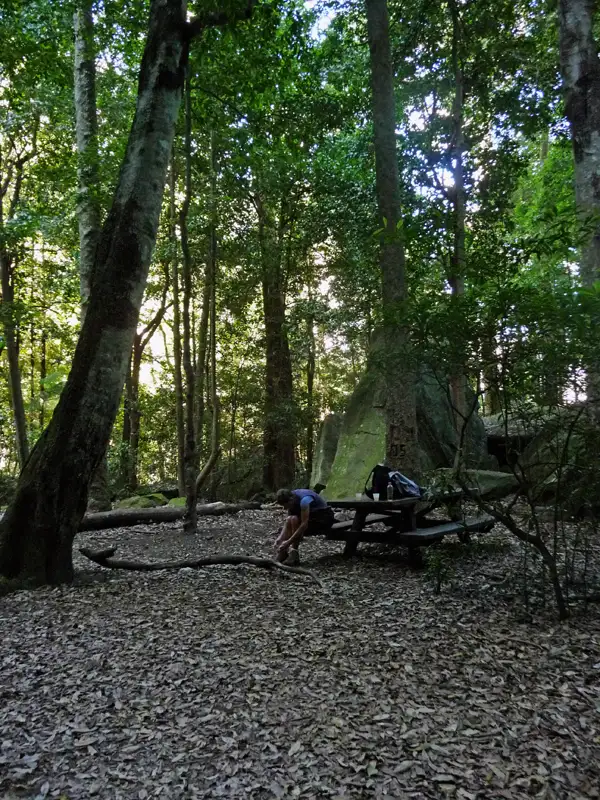
After reaching Leura Forest it’s time for a break and this is a great spot to relax and enjoy the serenity.
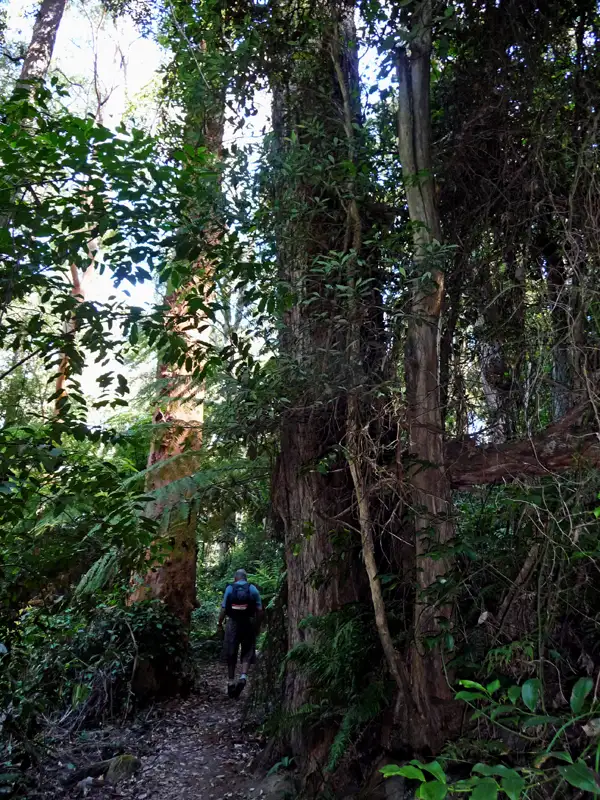
After your rest, continue the final 2.5-hour stretch to the bottom station of the Scenic Cableway. There are two bushwalks to the Scenic Cableway, via the Dardanelles or Federal Pass trek. Be sure to arrive before 4 pm to catch the last ride up otherwise, you’ll face a steep uphill walk after an already long day on the trail.
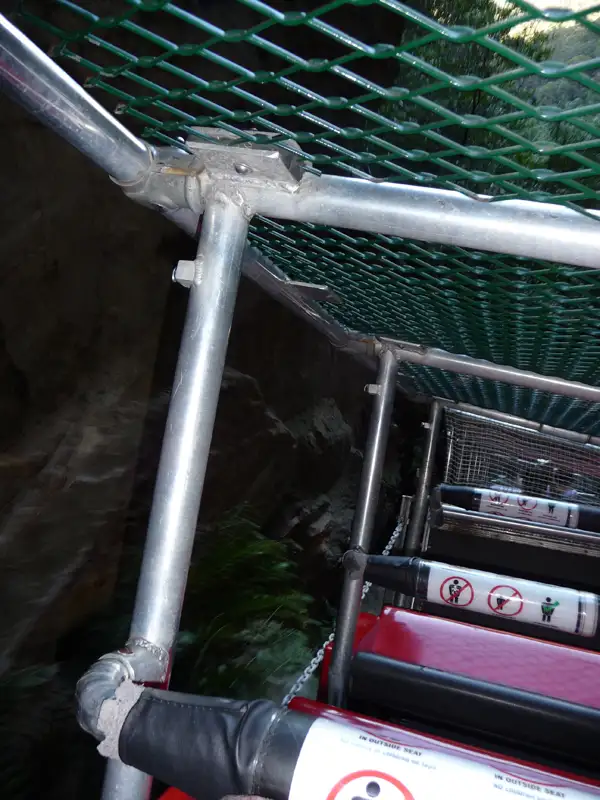
This remarkable cable car the steepest of its kind in the Southern Hemisphere is a fun and efficient way to return to your starting point. While the ride is thrilling, don’t expect sweeping views; it’s over quickly, and much of the journey passes beneath overhanging rocks. Still, it’s a great way to end the hike.
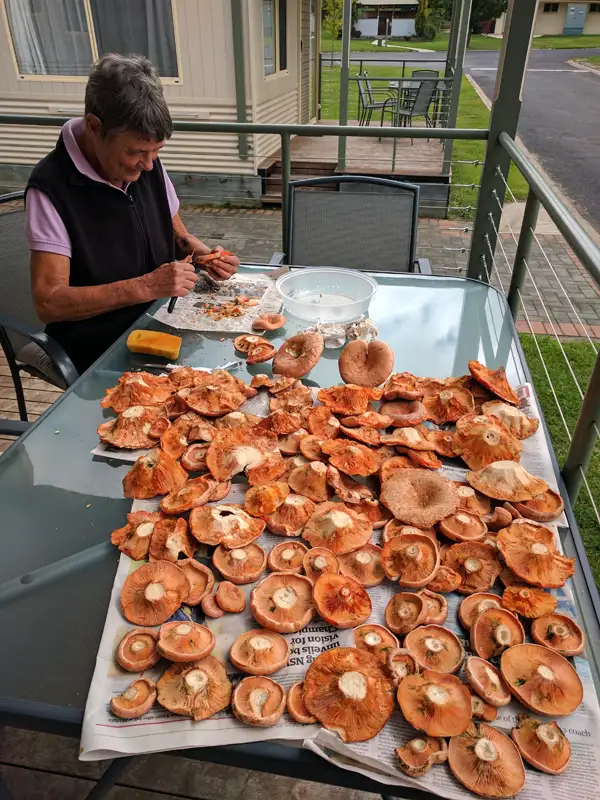
We didn’t do only bushwalks, we also did mushroom foraging in the Blue Mountains. From Blackheath we headed to Oberon, one of the only two places in NSW we know where you can find pine mushrooms. We were lucky to gather both Saffron Milk Caps and Slippery Jacks, and we’ve harvested enough to last us at least a year. There’s another place where we’ve found the same mushrooms we used to pick back in Germany. Can you guess where?
Warrumbungle National Park
Warrumbungle National Park is in New South Wales. It is known for its stunning volcanic landscapes, rich wildlife, and stargazing. The main volcanic points are the Breadknife, Belougery Spire, and Bluff. The Park was declared as Australia’s first Dark Sky Park in 2016, for its exceptional night skies free from light pollution.
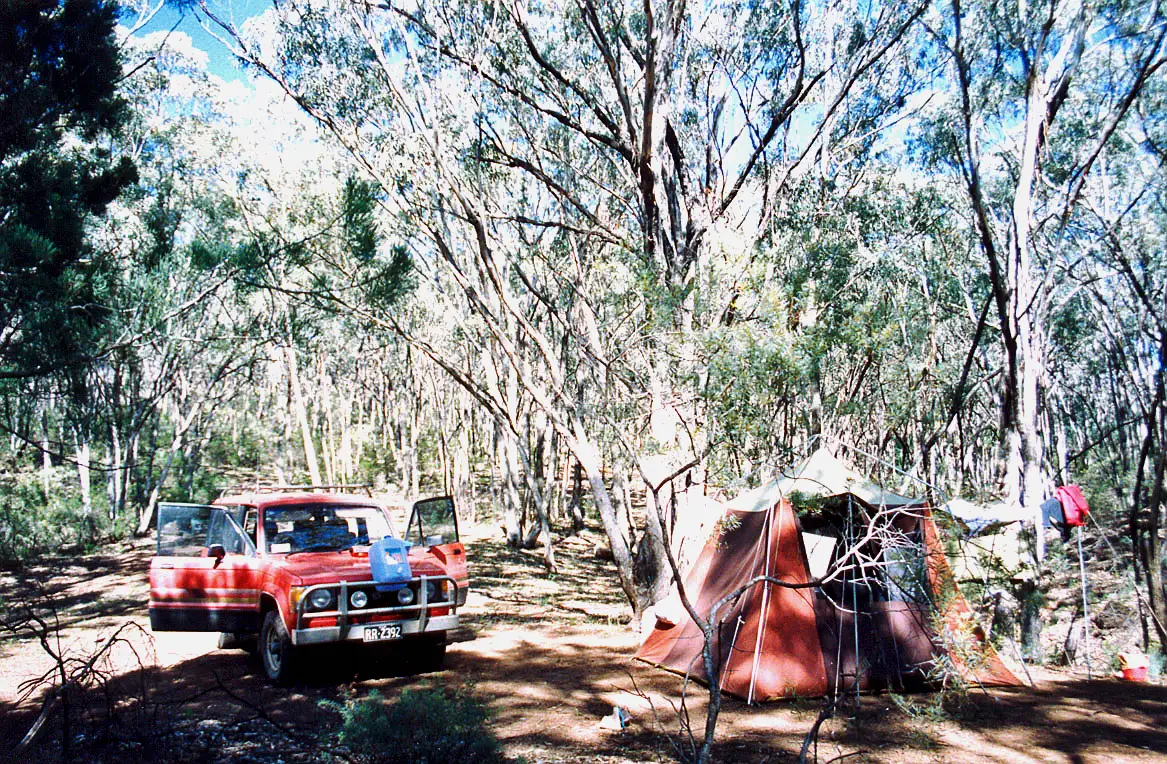
The first camping trip we did after arriving in Australia was in Warrumbungle National Park, which is near the town of Coonabarabran in NSW. We stayed in a remote spot halfway up the mountains. It was incredibly peaceful, just one other camper was there. The site had basic facilities, including a wood fire pit and toilets. For having a showers. we had to hike 45 minutes down to another campsite.
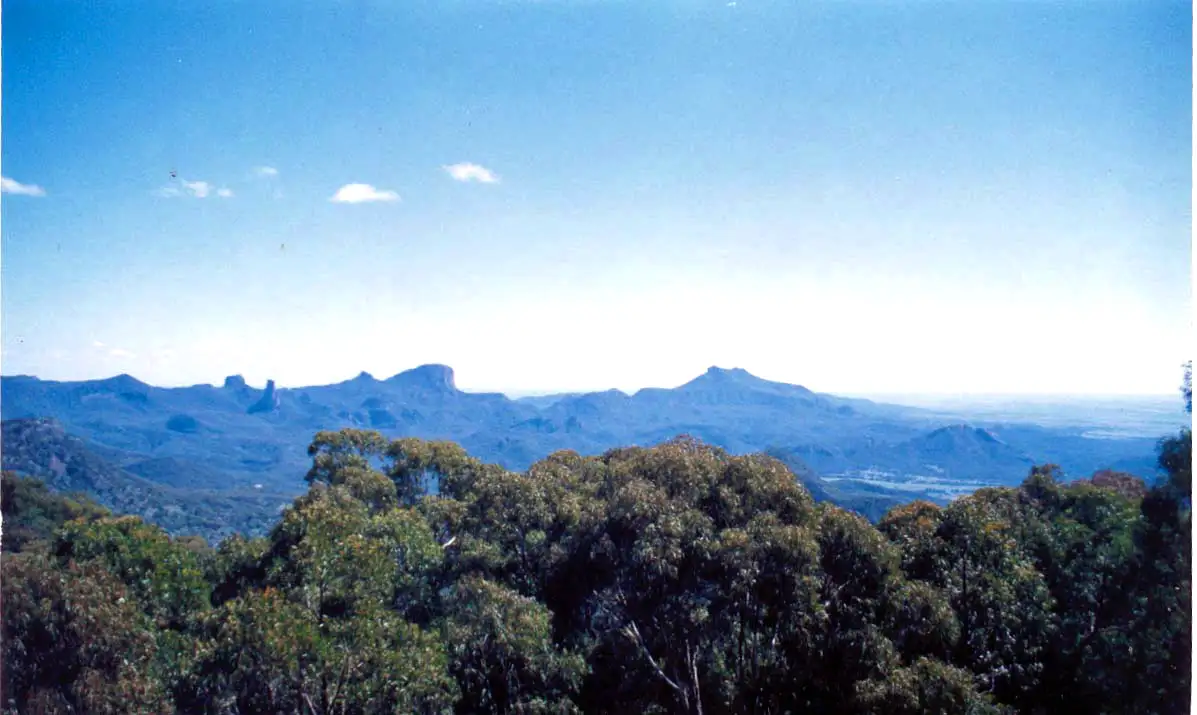
The bushwalks and scenery were truly stunning. But since we didn’t yet have a digital camera, we took far fewer photos than we would nowadays
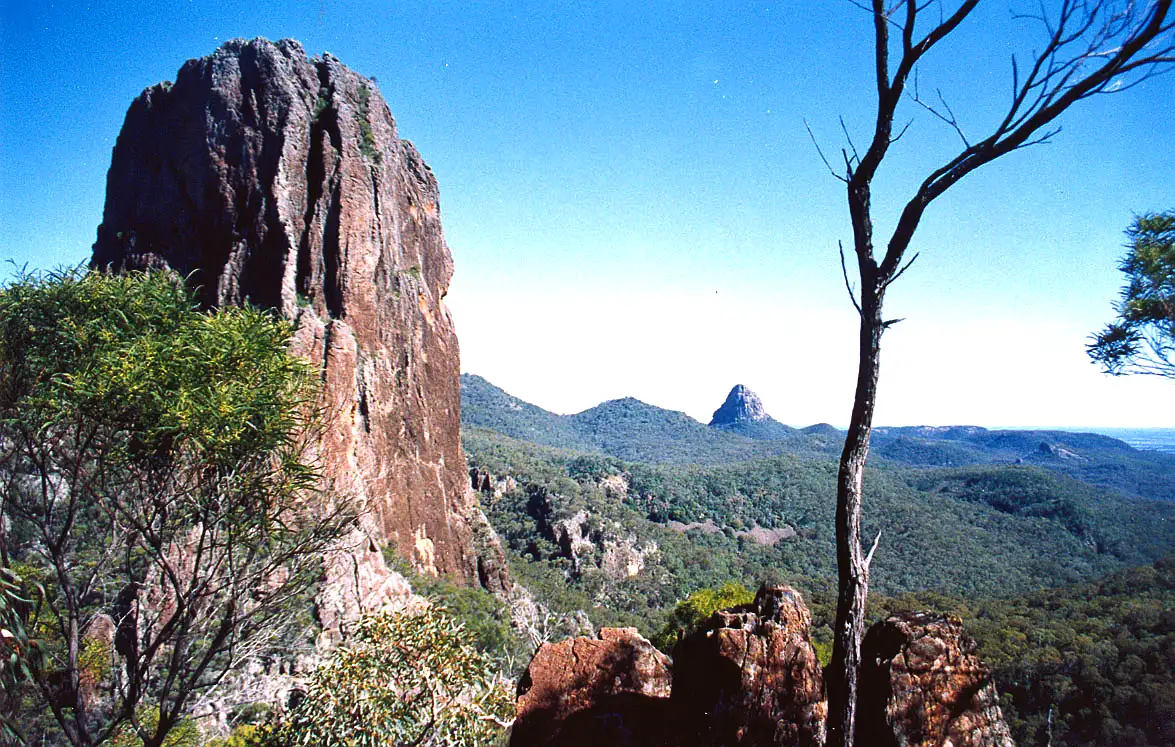
We tackled a couple of challenging bushwalks, including the Breadknife and Grand High Tops Walk, a 13km trek that took us about five hours. The panoramic views were stunning, and we were thrilled to spot two koalas.
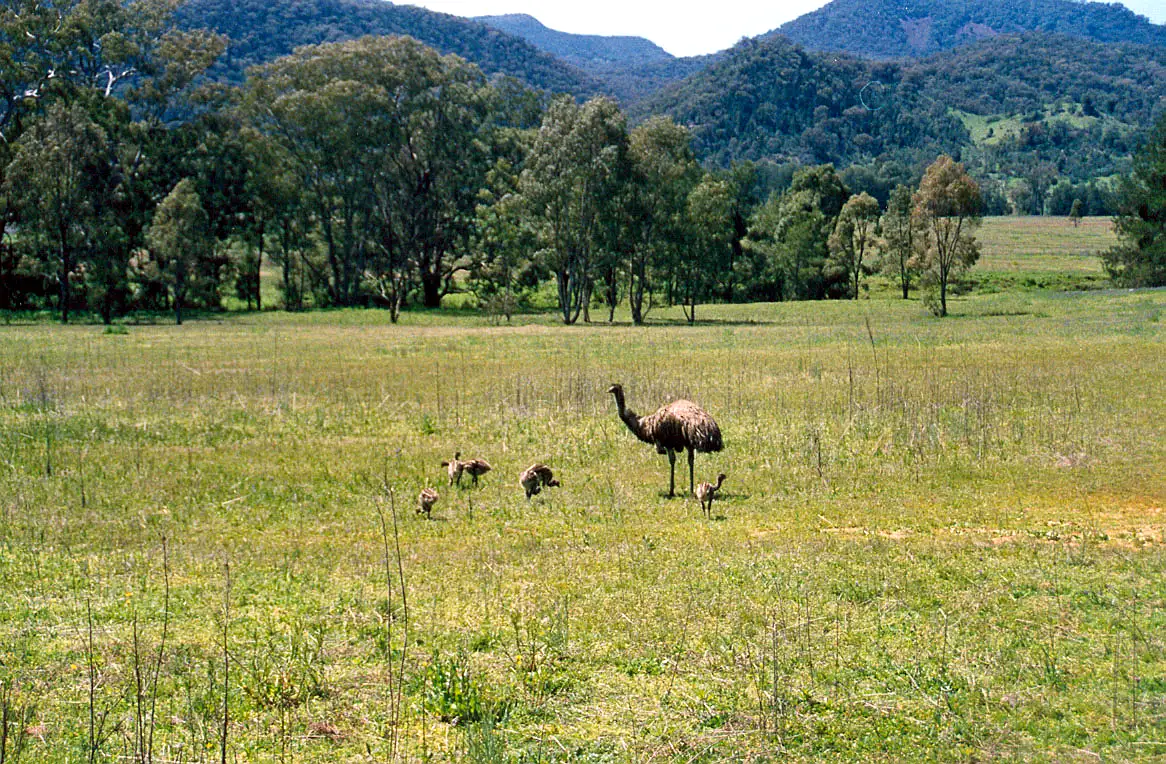
The Warrumbungles are a fantastic place to spot native wildlife kangaroos, emus, and even koalas. But spotting koalas isn’t always easy; spend too much time scanning the treetops, and you might forget to watch your step!
Bald Rock National Park
Bald Rock National Park is named after the massive Bald Rock, the largest exposed granite rock in Australia. It is located near the border between NSW and Queensland.We loved the bushwalks between the granite landscapes and eucalyptus forests.

On our way back from hiking in Lamington National Park, we spent a couple of days at Bald Rock Bush Retreat. It’s on a 255-hectare property near Bald Rock National Park, about 36 km from Tenterfield.The cabin was small but charming but very romantic. Overlocking a dam in the heart of the bush. It was incredibly peaceful, with nothing but the sounds of nature and an abundance of wildlife all around.
Bald Rock National Park

We went.up to the Bald Rock Summit, which is a short but hard Bald Rock Summit. The toughest part is the start until you come out of the bush and meet the bottom of Bald Rock. From the summit, at 1277 metres above sea level, we had an unbelievably 360 degree view.
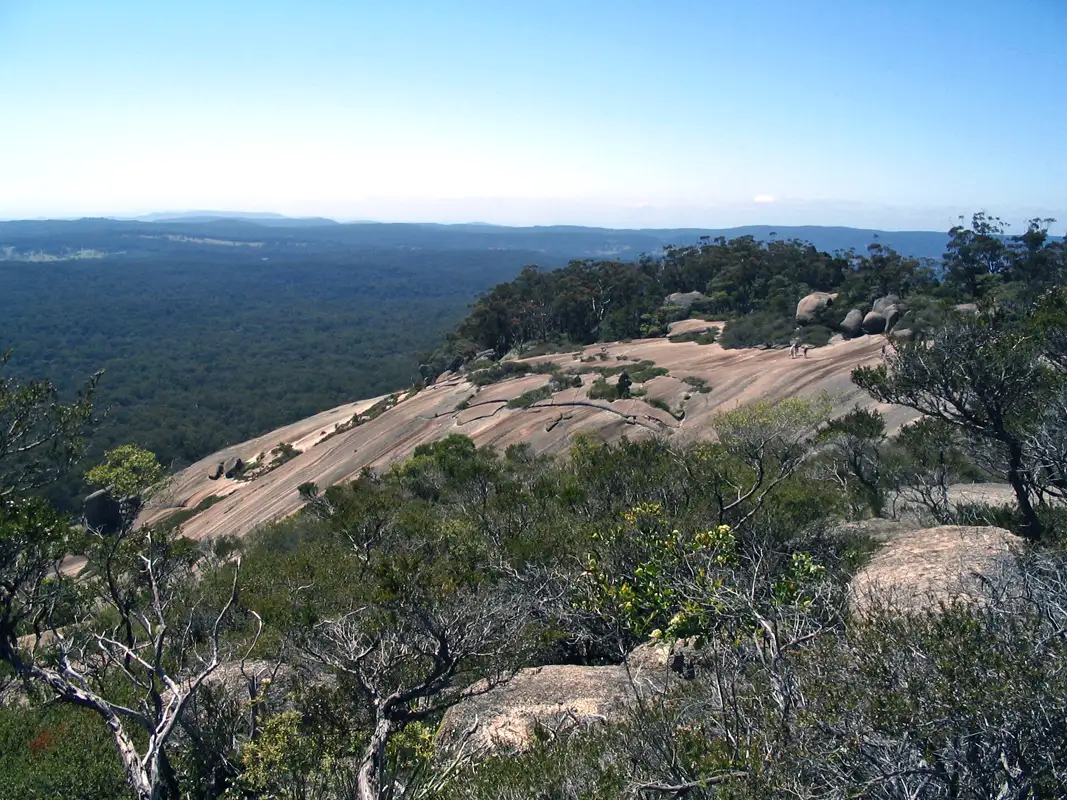
After reaching the Bald Rock Summit, we continued walking to the Trig Lookout.From there we had sweeping views of the New England highlands and in the distance mountains of the Border Ranges.
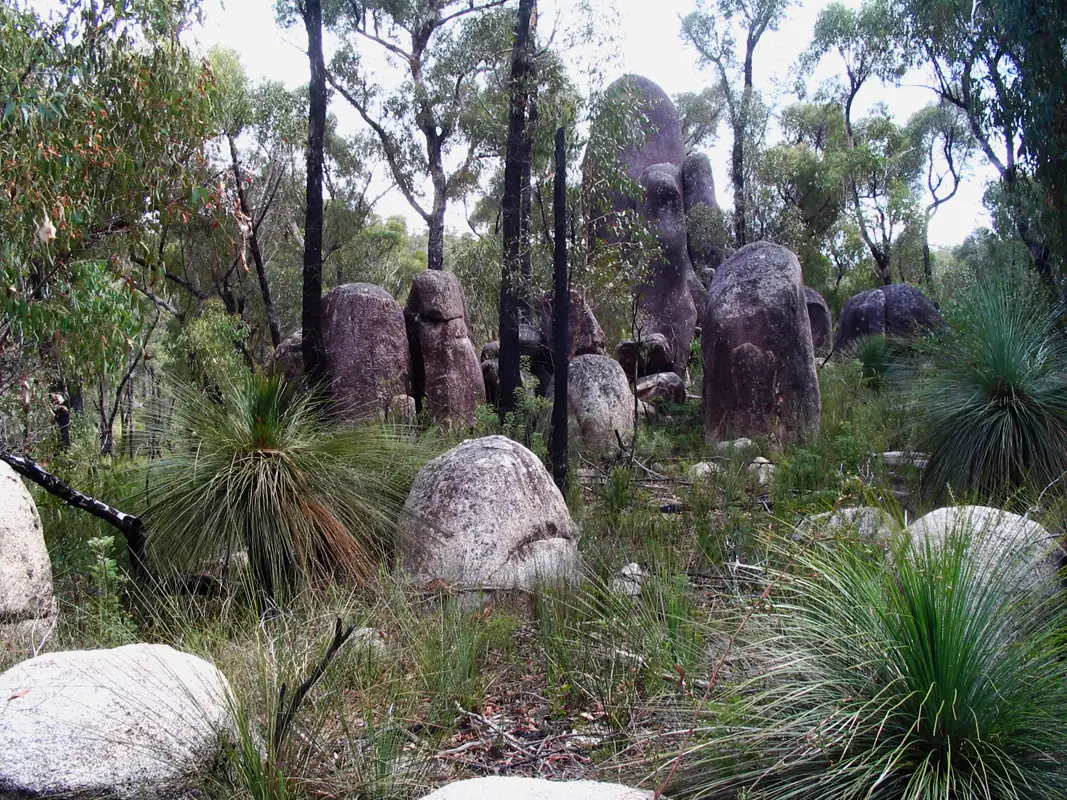
Hiking the bushwalks in Bald Rock National Park is like walking though through a granite wonderland. We walked along Red Stringybarks, Banksias, Grevilleas trees and other native flora. Along the way, we found many beautiful Rock Orchids.
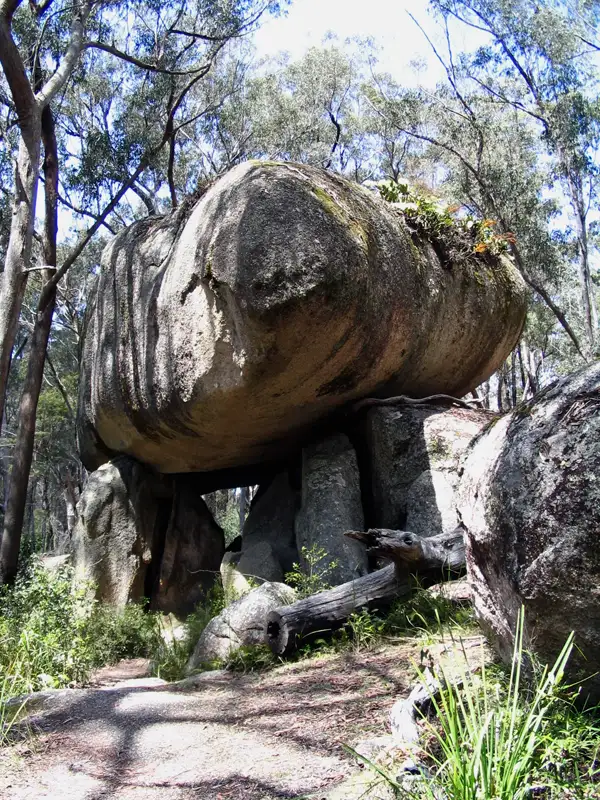
Bald Rock National Park has some amazing granite tors. These huge, free-standing rocks have been shaped by the weather into cool things like arches and bridges.

During our hikes in Bald Rock National Park, we came across beautiful Rock Orchids, also known as Rock Lilies. These hardy plants thrive in the park’s rugged, rocky terrain, showcasing stunning clusters of creamy white to yellow flowers.
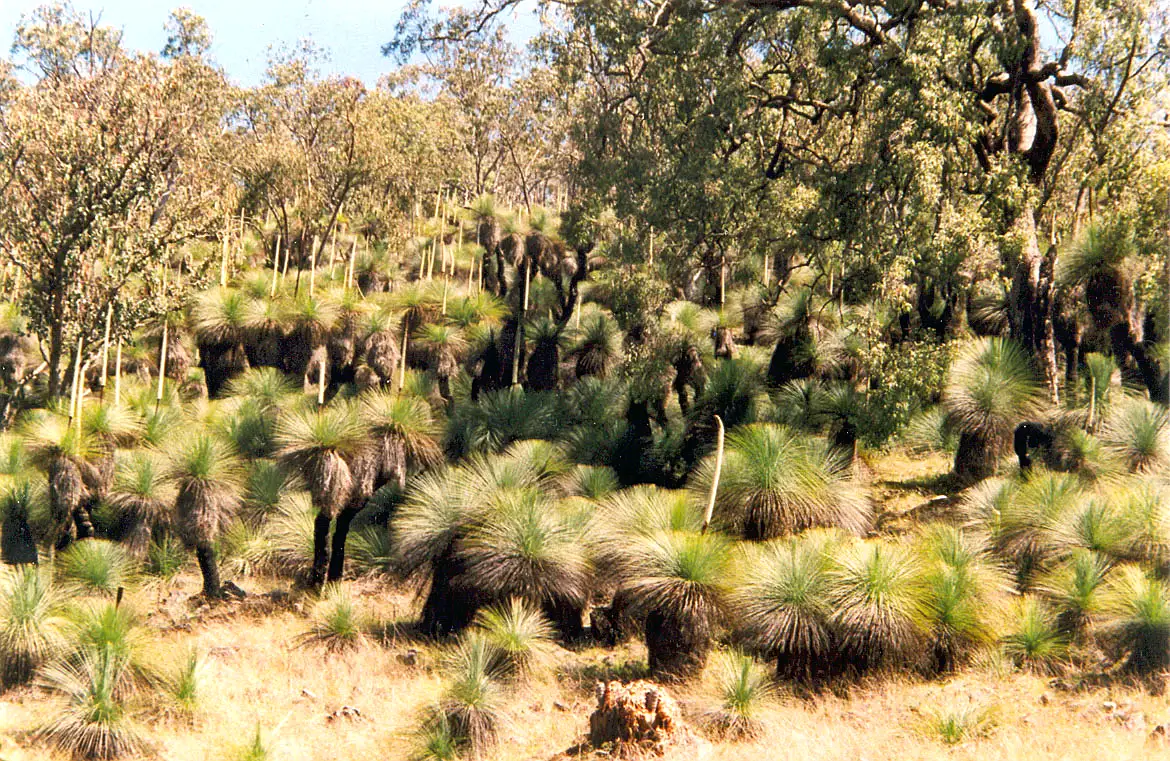
We made a quick stop at Crawney Pass National Park near Nundle to snap a photo of the awesome grass trees before wrapping up our amazing trip.
More from NSW: South Coast